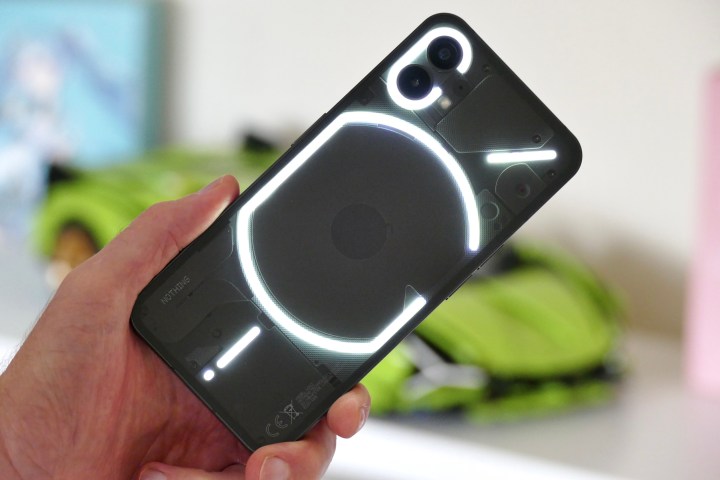Nothing, the buzzy consumer electronics upstart from former OnePlus co-founder Carl Pei, has just announced plans for its next smartphone venture. At Mobile World Congress (MWC) 2023, Pei divulged that the company’s next phone will use a flagship Qualcomm chip.
Pei confirmed that the upcoming Nothing Phone 2 will come equipped with one of Qualcomm’s top-end Snapdragon 8 series processors. However, he stopped short of confirming the exact chip.
Is it the Snapdragon 8 Gen 2 inside?

Lewis Hopkins, Nothing’s U.S. and U.K. public relations manager, told Digital Trends that the company can only confirm a “Qualcomm Snapdragon 8 Series” processor at this point in time.
It’s not hard to deduce that the chip in question likely won’t be the latest and greatest Snapdragon 8 Gen 2. Almost every smartphone maker out there that is using this particular chip in their phone makes a point to sing its praises in their smartphone marketing blitz. Nothing isn’t.
The Qualcomm chip we expect in the Nothing Phone 2
Our safest bet would be the Snapdragon 8+ Gen 1, a midcycle refresh of the Snapdragon 8 Gen 1 system on a chip (SoC) introduced last year. In a separate interview with TechCrunch, Pei dropped another solid hint that the Nothing Phone 2 won’t be using the Snapdragon 8 Gen 2. When asked about the next Nothing smartphone, Pei said, “in terms of cost, it will probably be similar.”
Pei’s statement is another strong sign that the Nothing Phone 2 will be using a previous-gen Snapdragon 8 series processor to save costs, instead of splurging on Qualcomm’s latest silicon. Multiple smartphone makers have deployed this strategy in the past to offer a budget flagship, and it won’t be surprising to see Nothing following in those footsteps.
I’m actually quite excited at Nothing’s strategy here. The Nothing Phone 1 delivered a solid experience despite relying on a midrange processor. That’s because Nothing kept the UI extremely clean and snappy, even though Pei claims that the team didn’t get enough time (and resources) to work on Nothing OS for the Nothing Phone 1.
Nothing has its work cut out for it

With the Nothing Phone 2, Pei insists that software will be a key focus. Coupled with a powerful Snapdragon 8 series processor, the upcoming phone sure sounds like a compelling package with a competitive price tag in tow. Plus, it is coming to the U.S. market, which could use some competition to shake up Apple and Samsung’s dominance.
So far, Nothing OS has stood out mostly with tricks like custom animations, iconography, and third-party app integrations like a Tesla quick toggle. With a powerful processor available to do the heavy lifting, we can definitely expect the company to deliver some more functional tricks. So far, the company has remained tight-lipped about what’s in the pipeline.
But the road ahead won’t exactly be a cakewalk. A resurgent Pixel lineup armed with the in-house Tensor processors, better cameras, neat design, feature-packed software, and killer pricing has finally given Google a chance to flex its smartphone muscles.
More than Apple or Samsung, the Nothing Phone 2 will have to undercut the likes of the Pixel 7 to make a real splash by offering more value to the average smartphone buyer looking to get the most bang for their buck. A standout design like the Nothing Phone 1 definitely helps, and that’s something the company would want to replicate on the successor as well.
However, Nothing is not too keen on making a foldable phone, Pei tells TechCrunch. The Nothing Phone 2 comes out later this year, but Pei has already teased a new product announcement in the coming weeks.
Editors' Recommendations
- I can’t wait for Nothing to launch this stunning phone
- I just got one of 2024’s most interesting phones. Here are 5 things I can’t wait to try
- The Nothing Phone 2a has an incredible feature no one’s talking about
- This is the Nothing Phone 2a
- The Nothing Phone 2a just leaked with a truly unusual design





